Alicante and the Costa Blanca are popular destinations in Spain amongst sun seekers from all over the world.
The Costa Blanca is known for its beautiful beaches, wonderful climate, and tourist resorts like Benidorm, Altea, Calpe, Gandia, and Javea to the north of the province, and Santa Pola or Torrevieja to the south.
It’s a pity, because the inland areas of the province offer attractive places and some real hidden gems to be discovered.

Bocairente Arch. Wikimedia Commons: Enrique Íñiguez Rodríguez, adapted by Wandering Educators
Discover incredible landscapes, including several natural parks, pretty little Spanish villages, beautiful monuments forming part of the legacy left by ancient civilizations (the Greeks, Romans, Arabs and Phoenicians), and let’s not to forget its legacy of gastronomic delights.

Hermitage of San Juan Bautista de Bocairente, raised on the site of the old mosque of Bekiren. Wikimedia Commons: Enrique Íñiguez Rodríguez
Despite of all this, very few travelers venture inland to discover more of this territory on the east coast of Spain. This is slowly changing and more and more travelers arriving at Alicante airport rent a car during their holidays in Spain to venture inland and explore. With the help of a GPS device, a roadmap, and a decent travel guide (or some investigation before leaving home,) it is easy to travel around the area as the roads in this part of Spain are excellent.
The province of Alicante forms part of the Comunidad Valenciana. The official Tourism Site of the Region of Valencia mentions up to 17 different proposals for those who would like to visit the inland areas of the region and discover new and exciting places in Spain.
One of the most attractive areas is located to the north of the city of Alicante and to the west of Benidorm. It is a territory with several mountain chains, including the Sierras del Benicadell, Sierras de la Carrasqueña, and the Sierras de la Mustalla y la Almissera, separated from each other by little rivers such as the Serpis, the Gorgos, Algar, or the river Guadalest.
National Parks
The region offers several natural parks that are a must-see, including Font Roja and la Sierra de Mariola.
Font Roja
In Font Roja, visitors can admire snow pits used in ancient times to store snow, as well as lime ovens, traditional farmhouses, and many small chapels and shrines dedicated to the local patron saint of every single village. Surrounded by the river Polop to the north and the Ibi valley to the south, Font Roja has been declared a Natural Park and is one of the most popular mountains to visit amongst the locals of Alicante.
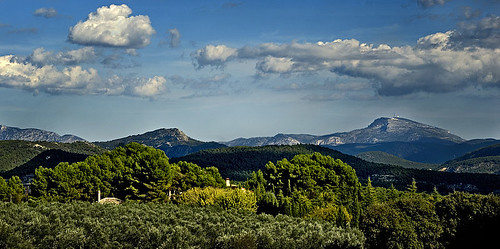
Natural de Font Roja. Wikimedia Commons: Jorgepespi
La Sierra de Mariola
The Sierra de Mariola is another natural area which is a very popular choice for hikers from all over the province.
This mountainous area is located between the regions of L'Alcoià, Comtat, and La Vall d'Albaida. The sources of some of the most important rivers of the province of Alicante like the Agres, the Vinalopó, and the Serps can be found here. Many charming little villages, castles from the Middle Ages, snow pits (neveras), and enchanting chapels are witnesses of the historical and cultural legacy of the past. The land in these valleys is dedicated to the cultivation of almonds, cherries, and other fruits, interspersed only by the occasional olives grove and vineyard.

Masía el Altet and Sierra de Mariola Nature Reserve. Wikimedia Commons: Jorgepespi
Towns and Castles
Some of the towns and villages which form part of the Sierra de Mariola Natural Park are Alcoy, Cocentaina, Agres, Alfafara, Bañeres, Muro d'Alcoi, and Bocairent. Evidence found in several excavations in the area proves the presence of humans since ancient times and remains from the Neolithic period and the Bronze Age have been found in both Alcoy and Agres.
The presence of an Islamic community, who ruled the area for many centuries, can still be seen in the numerous architectural remains, like the castles in Cocentaina, Bañeres de Mariola, or Vinalopó.

Castillo de Biar, Vinalopo. Wikimedia Commons: Rodriguillo
Some think the most attractive towns and villages of the region include Bocairent, Alcoy, Bañeres, Ontinyent, and Cocentaina.
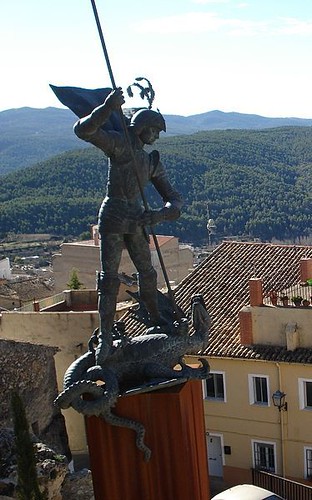
Banyeres: San Jorge y el Dragón. Wikimedia Commons: Enrique Íñiguez Rodríguez
Alcoy is located at the crossing of five different rivers (Riquer, Serpis, Molinar, Uxola, Bnisaido, and Riquer) and the city is full of charming viaducts and ancient bridges. Alcoy is best known for its Moors and Christians festival, which is probably the most famous of its kind around the entire Costa Blanca.
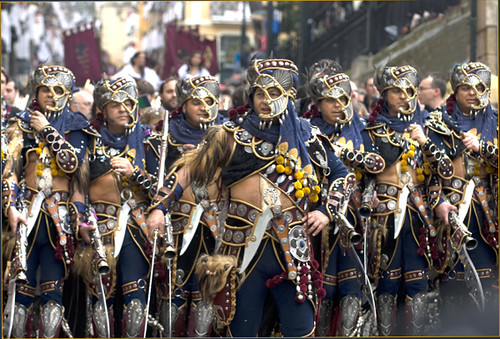
Wikimedia Commons: FEDESCODA
Bocairent is a small and tranquil town just an hour away by car from the well populated beaches of the Costa Blanca. Nestled in the Sierra Mariola Mountains, the cobbled narrow streets of the old town, the local architecture, and the little squares offer a good idea of how life in this part of Spain was like several centuries ago. A history of textiles is commemorated in art – the statue El hombre de la Manta de Bocairente, by José Gonzalvo, at the Museu Home de la Manta Bocairent.
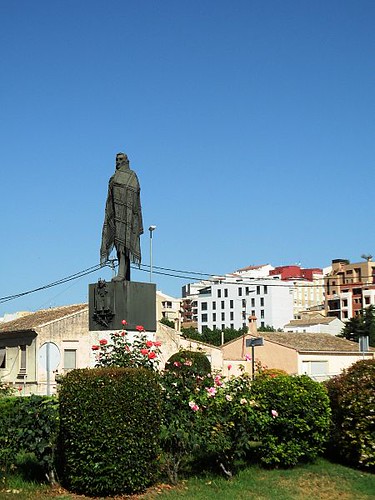
Wikimedia Commons: Enrique Íñiguez Rodríguez
Ontinyent is situated on the banks of the river Clariano in the center of the Valencia Region. The village has been inhabited by different civilizations since prehistoric times. Remains from the Bronze Age and the Iberian period have been found in different archaeological sites around the village.
During the Andalusian period, the region was dotted with several hamlets, an important walled settlement, and several artificial caves excavated in the rocks which were used as refuges or grain stores.
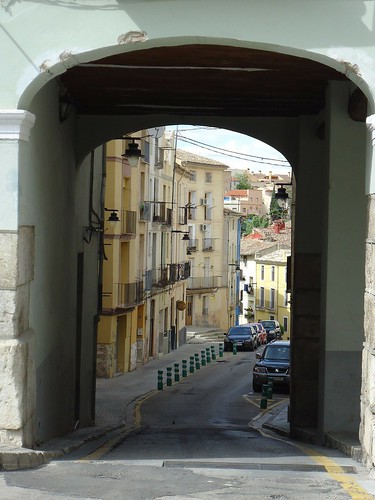
Cocentaina is a little medieval town tucked away in the Sierra Mariola mountains. Cocentaina is fairly unknown, but the old restored town of the village is incredibly beautiful and there are several monuments worth visiting, like the Comtat Palace in a part of the village called La Villa, or the impressive church with its ornamental architecture and golden entrance door. The Ermita de Santa Barbara on the top of the hill offers some of the most breathtaking views of the area.
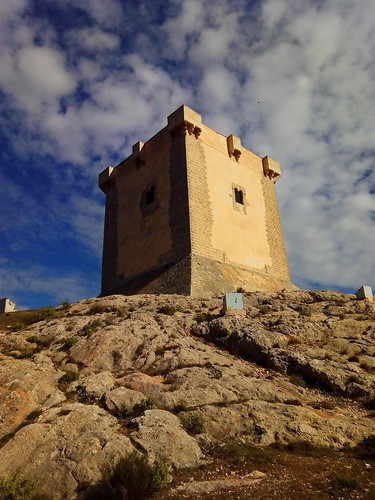
Another must-visit is Guadalest, situated on top of a 500m high rock between the sierras of Xortá and Aitana. The historical quarter of the Valencian town is of Arab origin and has been very well preserved, while the castle of San José offers splendid views of the surroundings. The access to the fortress is a natural tunnel through the rocks.

Have you explored inland Alicante? What did you love most?
